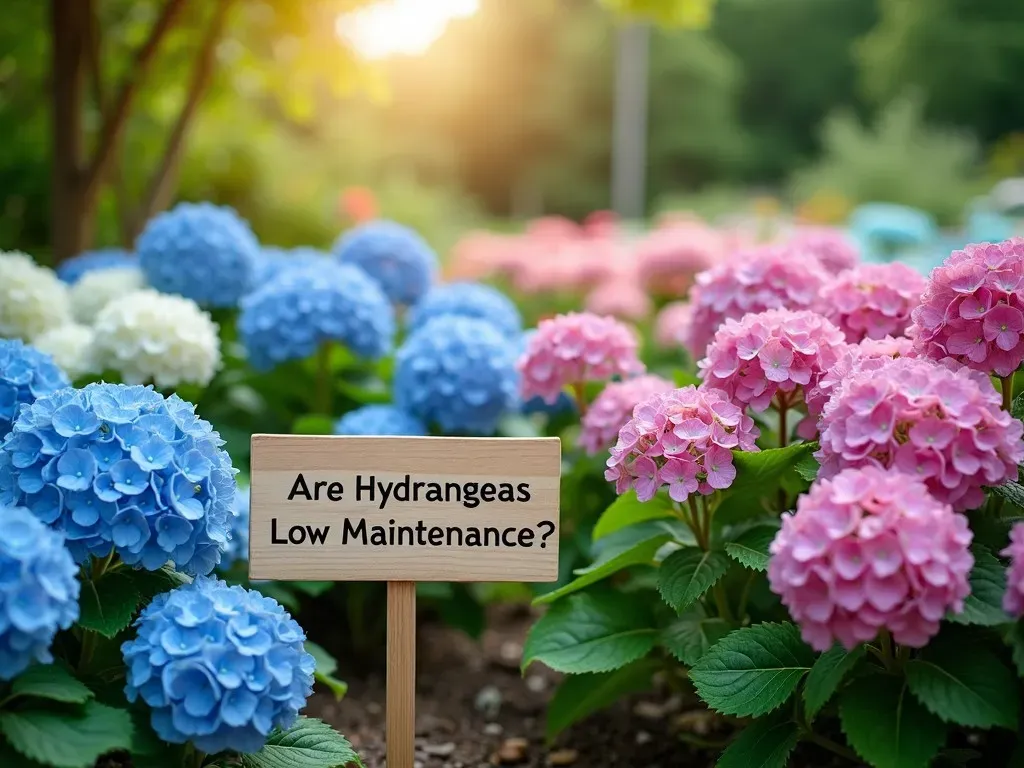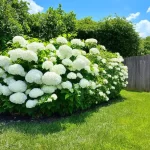The question of whether hydrangeas are low maintenance often sparks debate among gardeners. While some varieties can indeed thrive with minimal care, Others might demand more attention. In this article, we dissect the low-maintenance nature of hydrangeas, revealing which types are easiest to grow and care for.
Understanding Hydrangeas
Hydrangeas are versatile and visually appealing shrubs known for their stunning blooms. They come in various species, including the popular hydrangea-types/unlock-the-secrets-of-hydrangea-macrophylla-the-ultimate-guide-to-care-and-varieties/">hydrangea macrophylla (bigleaf hydrangea), Hydrangea paniculata (panicle hydrangea), and many more. These plants can display a wide range of colors, predominantly blue, pink, and white, depending on the soil’s pH level and the specific variety.
To assess the maintenance level of hydrangeas, it’s crucial to understand their growing requirements:
| Hydrangea Variety | Sunlight Requirements | Soil Type | Watering Needs | Pruning Requirements |
|---|---|---|---|---|
| Hydrangea macrophylla | Partial to full sunlight | Moist, well-drained | Regular watering needed | Prune after flowering |
| Hydrangea paniculata | Full sun to partial shade | Average, well-drained | Moderate watering | Prune in late winter or early spring |
| Endless Summer Hydrangea | Partial to full sunlight | Well-drained, acidic | Regular watering | Light pruning needed |
Easiest Hydrangeas to Grow
Many gardeners seek the easiest hydrangeas to cultivate. Here are some options widely regarded as low maintenance:
- Hydrangea paniculata: Known for their hardy nature, these hydrangeas provide large blooms that transition in color as they mature. They adapt well to different soil types and require minimal pruning.
- Lacecap Hydrangeas: Offering a unique flower structure, these can thrive in more challenging weather conditions, making them ideal for low-maintenance gardens.
- annabelle hydrangea: These are incredibly easy to grow with large white blooms that are visually stunning. They can thrive in various lighting conditions and are resistant to many pests.
- Nikko Blue Hydrangea: Renowned for its vibrant blue flowers, this type is relatively low maintenance as it requires only basic care, such as regular watering and occasional pruning.
Care Tips for Hydrangeas
To maintain hydrangeas efficiently, follow these basic care tips:
-
Location: Choose a location that receives morning sun and afternoon shade. This balance helps prevent wilting while ensuring healthy blooms.
-
Soil Preparation: Before planting, enrich the soil with compost or organic matter to ensure that your hydrangeas have a nutrient-rich environment to thrive.
-
Watering: Hydrangeas prefer consistent moisture, so regular watering is essential, especially during dry spells. However, ensure that the soil drains well to avoid root rot.
Watering Frequency by Season
| Season | Frequency |
|---|---|
| Spring | Every 5-7 days |
| Summer | Every 2-5 days (more often in drought conditions) |
| Fall | Once a week as leaves drop |
| Winter | Minimal, ensure soil doesn’t freeze completely |
Frequently Asked Questions
Q: How often should you prune hydrangeas?
A: Pruning frequency depends on the species. For Hydrangea macrophylla, prune after blooming, while for Hydrangea paniculata, pruning is best done in late winter or early spring.
Q: Are all hydrangeas considered low maintenance?
A: Not necessarily. While some varieties, like Hydrangea paniculata and Annabelle, are more forgiving with care, others, such as some bigleaf types, may require more attention to water and soil conditions.
Q: Can hydrangeas tolerate drought?
A: Hydrangeas prefer moist soil; thus, prolonged drought can be detrimental. If you expect dry conditions, ensure consistent watering.
Q: Do hydrangeas attract pests?
A: Generally, hydrangeas are not prone to significant pest issues. However, occasional problems may arise, including aphids and spider mites. Monitor your plants for signs of infestations.
Common Issues and Solutions
| Common Issue | Signs | Solution |
|---|---|---|
| Wilting leaves | Leaves droop and may discolour | Ensure proper watering and shade |
| Flower disappointment | Flowers fail to bloom | Check the pruning schedule and watering frequency |
| Color fading (blue to pink) | Soil pH changes | Adjust soil amendments for desired color (add sulfur for blue) |
The Verdict: Are Hydrangeas Truly Low Maintenance?
While hydrangeas have a reputation for being low maintenance, it’s important to choose the right variety for your climate and soil type. Many hydrangeas thrive on neglect once established. However, improper care at the planting stage can lead to issues down the line.
To achieve a thriving hydrangea garden, invest initial effort into preparation while enjoying the rewards of stunning blooms year after year. For a comprehensive guide on Hydrangea Care, visit The Spruce.

By understanding your specific varieties, their requirements, and proper maintenance routines, you can determine whether hydrangeas are the right addition to your garden. Whether for their eye-catching colors or their versatile growing conditions, hydrangeas can certainly become a low-maintenance staple for any gardener willing to learn their needs!


